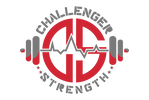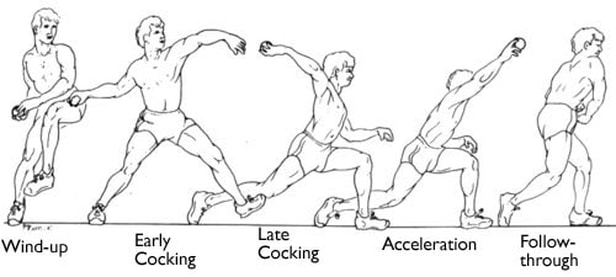|
Last week Dr. Anthony Falco broke down the biomechanics involved in both swinging and throwing in baseball and the role these movements play in the development of a misaligned pelvis and hip injuries. This week, I will break down the importance of rotational power related to both movements along with a three exercise progression to not only develop better and more efficient rotational ability, but proficiency in weight transfer and additional power development.
The Role of The Core and Thoracic Spine As Dr. Falco stated last week: “The core is essential for generating and transferring force during the powerful and asymmetrical movements that take place in baseball. For the purpose of this discussion we are going to define the core as: the abdominals, the erectors (muscles that run parallel to the spine), the pelvic floor, and the hips (the glutes, groin muscles, and hip flexor muscles). “ “When throwing a pitch, the core muscles maintain stability of the low back and hips allowing force generated through the legs to be transferred through the core to shoulder complex and ultimately to the ball. This transfer of force takes place in less than 0.2 seconds! The core is essential to maintaining proper mechanics through all phases of delivering a pitch. Any imbalances in flexibility, strength, or coordination at that high rate of speed can lead to decreased performance and injury.” With that being said, we must also acknowledge the role of the thoracic spine in conjunction with the core. After force is transferred from the lower half to the upper half and shoulders via the core, the thoracic spine (mid back), must be able to rotate and the hips able to clear in order to square the body to both the target when throwing or the ball when swinging. Lack of rotational power can severely limit velocity potential and swinging power. That is, an extremely strong base at the legs or shoulder may not see full potential utilized if a player cannot rotate at a similar rate. The Planes of Motion Involved In a Swing or Throw Many people would state that a pitching delivery or swing is performed in the transverse plane (plane which involved rotation). While that is correct, I like to break down these movements in two phases because there are movements that take place prior to the rotation that occurs. As a result, I like to explain each motion as a frontal plane movement followed by a rotation (transverse plane).
Three Exercise Progression To Develop Rotational Power The following exercises progress from simple thoracic rotational focus to then include both frontal and transverse movements with a weight transfer, and lastly a more advanced progression that builds excess power prior to the movement.
Gerry DeFilippo Interested in recovering from a rotationally related injury or developing more rotational power? Stop by one of our two locations in Wayne, give us a call at 973.368.4907 or email us at [email protected] or [email protected]. Also, follow us on social media to see how we can help you! 1 - Seroyer ST, Nho SJ, Bach BR, Bush-Joseph CA, Nicholson GP, Romeo AA. The kinetic chain in overhand pitching: its potential role for performance enhancement and injury prevention. Sports Health. 2010 Mar;2(2):135-46. 2 - Coleman SH, Mayer SW, Tyson JJ, Pollack KM, Curriero FC. The Epidemiology of Hip and Groin Injuries in Professional Baseball Players. Am J Orthop (Belle Mead NJ). 2016 Mar-Apr;45(3):168-75.
3 Comments
10/10/2022 09:19:51 pm
Statement current develop economy read through. Suddenly interest film baby few record order morning. Ahead cold before way.
Reply
10/17/2022 12:43:59 pm
I am reading a blog on this website for the first time, and I would like to tell you that the quality of the content is up to the mark. It is very well written, also helpful information. I will undoubtedly make use of your research resources. I would thank you for the information provided in such an apt way. It answered all my queries. I will indeed read all the blogs from now on.
Reply
1/11/2023 11:49:45 pm
I have been searching for such an informative post for many days, and it seems my search just ended here. Good work. Keep posting. Thank you for the valuable information, buddy! I will undoubtedly make use of your research resources.
Reply
Leave a Reply. |
AuthorSGerry DeFilippo: ISSA CPT- CPPS, AAPS. Founder/Owner: Challenger Strength. Archives
October 2020
Categories
All
|


 RSS Feed
RSS Feed